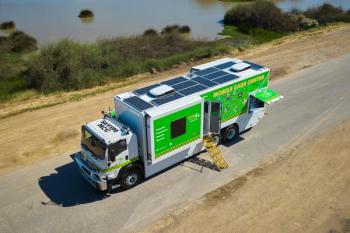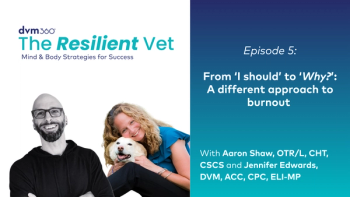
From exam room to starting line in eight weeks
With dedication, training, and planning you can run a 5K race.
You've decided that now is the time to get your life back in order. You want to be healthier, lose weight, reconnect with loved ones, and reclaim the energy you had in your younger days. One of the best ways to get started is to begin an activity program, and one of the most enjoyable and rewarding activities is completing a a 5K (3.1-mile) race. Regardless of whether you've ever laced up a pair of running shoes, we all possess the ability to move. In fact, one of the keys to our development as a species was the ability to run and chase. Besides, running is just plain fun! Remember how good it felt to run down the street playing with your friends as a kid, or streak after your dog in endless games of chase? The running season is only a few short months away and now is a great time to achieve those goals you set in January.
Basic equipment
The beauty of running is its simplicity. You don't need much more than some comfortable shoes and socks, running shorts or tights, and a shirt. Even better, you don't have to spend a lot of money. I recommend you go to a running-shoe store in your town (avoid the mass retailers or discount stores at this stage), tell them your budget and objectives (to run a 5K as inexpensively as possible), and ask them to fit you in a running shoe. A good running-store staff member will measure the height of your arch and the width of your forefoot, midfoot, and heel, and he or she will analyze your gait by asking you to stand and walk.
Forget your old gym socks; invest in two to three pairs of comfortable, sweat-wicking socks designed for runners. Don't skimp. Socks contribute more to your comfort than you realize. Plus, you get bonus points with experienced runners when you show up at an event in cool running socks as opposed to holey knee-highs.
Try on different brands and styles of running tops and bottoms until you find the most comfortable running outfit. Just because it's on sale or a popular brand doesn't mean it'll work well for your physique. There are enough brands and materials to fit anyone's budget. Look for high-tech fabrics (avoid cotton) that wick moisture away from your skin. You'll feel better and avoid looking like you just left the sauna after a workout.
Step it up
I can't imagine a 30-minute or three-hour run without my iPod. I listen to podcasts and audio books on long runs and up-tempo, positive music on shorter runs and during races when personal music devices are allowed. (Sadly, they're not allowed during Ironman events, which makes for a very long 13 hours! Luckily they're allowed at almost every running event. Check ahead with the race director if you have any questions.) A running cap or visor and polarized sunglasses are also essential items in a more seasoned runner's gym bag. Sunscreen is a must before any outdoor run. For longer runs or for individuals who sweat heavily, I recommend a Fuel Belt to carry fluids during activity. Don't go overboard. If you listen to music, keep the volume low enough to hear traffic and to avoid damaging your hearing. And as you start your program, don't overanalyze your workout.
See your doctor
If you're over the age of 35, have a pre-existing medical condition, have a family history of cardiovascular disease, or simply haven't been to the doctor in over three years, I recommend a physical examination before you begin a physical activity program. The real challenge is finding a personal physician who's interested in wellness and exercise and is willing to give you more than a quick listen with the stethoscope and pat on the back. I recently met a fellow marathoner who'd had a stroke at age 48 due to a ventricular wall defect (a "hole" in his heart) that could have been detected had he visited his physician regularly.
Avoid the pain and reap the gain
As you progress through the program, you may feel like you can handle more walking or running than the day's schedule recommends. I encourage you to take it easy. This program is designed to help an inactive person complete a 3.1-mile run in two months. Even though it may seem too easy in the beginning, you run the risk of injury if you increase the distance, time, or intensity too quickly. If you develop too many aches and pains, you're much more likely to quit and fall back into your old rut.
If you feel sore, especially the day after training, stretch out and try to complete the next workout. Many times what starts as soreness will end in relief and refreshment if you push through and continue training. If you've put on a few pounds in recent years, expect your body to tell you. Your musculoskeletal system was designed to handle the weight you were at 18, not the 30 extra pounds you may be carrying today.
Aching joints and muscles are signs that you're getting stronger. This beginner's program will minimize the soreness you'll experience, but don't be alarmed if you feel tight after some of the longer sessions. Of course, if you ever experience dizziness, lightheadedness, sharp pains, or nausea during a workout, stop and seek medical attention.
A few minutes each week
This program is designed for you to exercise 20 to 35 minutes per session three times a week. Ideally you should exercise every other day to allow your body to recover and become stronger. Avoid performing all three workouts consecutively.
If you can, exercise in the morning before work. Studies show that people morning exercisers are more consistent with their workouts and sustain physical activity longer than people who exercise in the evenings. As veterinarians, our days are too hectic and unpredictable to allow us to consistently train in the evenings. I have a saying: "What matters most gets done first."
Read all about it
Public accountability is one of the most powerful motivational tools you can employ. Pick a race in the next two the three months, register, and pay today, and post the race date and flyer on your employee bulletin board or in a highly visible area in your clinic. Tell as many people as you know about the race. I want people at your church or your children's school asking you how your training is going. I want your staff to remind you to run tomorrow morning and put down that doughnut. In short, I want the world to know your goals. If you have other people holding you accountable, you'll succeed.
Time training
There are two ways to measure your training sessions: distance or time. As a personal trainer and amateur athlete who also happens to be a busy husband, father, and veterinarian, I use time. That way I know how long my physical activity sessions will be. If I train by distance, one day I might do an eight-mile run in 45 minutes and another day it would take me an hour. While there's no right or wrong way to train, I recommend that beginners focus on time training.
These workouts are great to do on a treadmill. I do about 75 percent of my Ironman triathlon and marathon training indoors. Set the incline at 1 percent throughout the entire session to more closely mimic the terrain and wind resistance of the outdoors. At the end of eight weeks, you'll be more than capable of completing a 5K race.
Newsletter
From exam room tips to practice management insights, get trusted veterinary news delivered straight to your inbox—subscribe to dvm360.




